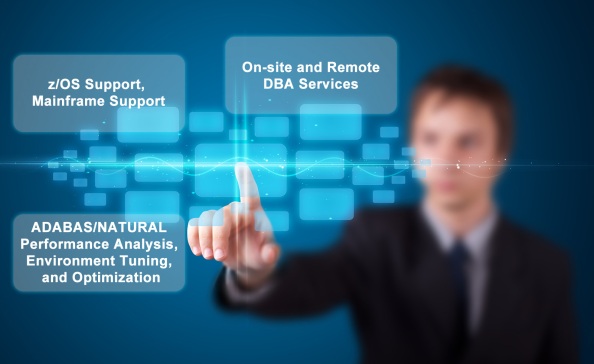by Frank Griffin, Senior Software Developer for Treehouse Software
This is the second in a series of blog posts concerning the Treehouse partnership with OpenLegacy (See Part 1 here). As discussed last time, OpenLegacy is a way to wrap legacy mainframe applications for presentation to Java, Web, and Mobile clients.
We’ve already covered the conceptual workings of wrapping 3270 applications in general, so this time we’ll examine the first steps of wrapping an actual 3270 application in detail.
If you haven’t already downloaded OpenLegacy, you’ll need to do so in order to follow along in this Proof of Concept. Go to http://www.openlegacy.com and select Resources → Download. You’ll need to provide your name and an email address, which will get you a userid and password for the download site at ftp://ftp.openlegacy.org .
CICS is one of the bulwarks of legacy 3270 applications. These days, it also supports a variety of other communications protocols, but for 3270 it acts very much like a Windows/DOS/Unix command line. You type a transaction name followed by optional arguments, and hit ENTER. CICS looks up the transaction name in a table to find the application program associated with it, and runs that program. The program writes to the terminal, either in line mode or using formatted 3270 screens, and may request further input from the user and provide additional terminal output.
CICS provides a number of utility transaction names with the product. We’ll be looking at two of them today: CESN (sign on to CICS as a known user), and CEMT (general multi-purpose transaction for querying and controlling aspects of CICS). We’ll construct a demo application by connecting to CICS, signing on with the CESN transaction and issuing the transaction CEMT INQUIRE PROG(xxxxxxxx) to obtain information about a specific CICS transaction program. The input to the application will be a userid, password, and application program name. The output will be some of the data associated with that program.
Open the OpenLegacy IDE, and choose New → OpenLegacy Project. Select “Screens” as the backend solution type, “Integration Web” for the frontend solution type, “Mainframe” for the host type, and supply your host’s name or IP address:
Now, we need to run an emulation session to “teach” OpenLegacy how to navigate. Right-click on the project and select OpenLegacy → run-emulation. This will set several things in motion. It will start an internal web server within the IDE on port 1512 and launch an instance of your default browser with a URL of http://localhost:1512. When the browser connects to the web server, it will execute a servlet that will use the open-source s3270 scripting emulator to connect to your mainframe and report the 3270 datastream to the servlet, which will convert the screen to HTML and send it to the browser.
The result is that your browser instance will appear to be a 3270 screen, and you’ll be able to interact with it as if it were a real terminal or terminal emulator. As you do, the servlet is sitting in the middle, logging all terminal activity between you and the mainframe. On our mainframe, the first screen you’ll see is the standard VTAM Logon screen:
We logon to CICS (the VTAM logon screen and the command you use may differ at your site), and depending on how CICS is configured, you may need to type “CESN” explicitly, or CESN may be started for you automatically:
Fill in a valid Userid and Password, and hit ENTER:
Clear the screen (ESC key in the browser emulator), as CICS transactions have to be invoked from a clear screen, type “CEMT INQUIRE PROG(DFHZNEP)” (DFHZNEP is a dummy network error program supplied with CICS), and hit ENTER:
The CEMT transaction has displayed all sorts of information about the DFHZNEP program, which is what we wanted.
At this point, we could continue with 3270 navigation to exit and signoff from CICS, but for simplicity in this example, we’ll just cut off the emulation here. This will cause OpenLegacy to disconnect the TN3270 session, which will cut us loose from CICS; if this were TSO, we’d have to follow through or risk leaving disconnected TSO sessions active.
Note that depending on the size of your browser window you may have to scroll down to make the “Logoff | Flip” links visible. Now click on “Logoff”, which will disconnect the terminal, shut down the emulator, and create the trail file which describes everything you’ve done:
The trail file is an XML document which describes in detail your interactions with the mainframe. It will be the input to the next phase of generating the application, which will be the subject of the next post.










